Selling a home after age 55 presents unique tax considerations that can greatly impact retirement planning. The Internal Revenue Service offers substantial capital gains exclusions for qualifying homeowners, yet many sellers miss opportunities to maximize their tax benefits. Understanding these implications, from federal exemptions to state-specific regulations, can mean the difference between a comfortable retirement and unexpected tax burdens. The key lies in strategic preparation and timing.
Key Takeaways
- Homeowners over 55 can exclude up to $250,000 in gains for single filers and $500,000 for married couples filing jointly.
- Strategic timing of home sale during retirement can help manage tax brackets and minimize overall tax liability.
- Document all home improvements to increase property basis and reduce taxable gains when selling the property.
- Consider catch-up contributions to retirement accounts in the sale year to lower taxable income and offset gains.
- Meet ownership and residency requirements by living in the home for at least 24 months within five years before selling.
Understanding Today’s Capital Gains Exclusions for Home Sales

Nearly every homeowner should understand the capital gains exclusions available when selling a primary residence, as these provisions can distinctly reduce tax liability on profitable home sales.
The Internal Revenue Service allows single filers to exclude up to $250,000 in gains, while married couples filing jointly can exclude up to $500,000.
To qualify, homeowners must meet specific ownership and use requirements, having owned and lived in the property as their primary residence for at least 24 months during the five years before selling.
This exclusion can be used once every two years, providing significant tax advantages for those who meet the criteria.
Special considerations apply when the property has been used partially as a rental or if depreciation has been claimed in previous tax years.
Key Tax Planning Strategies for Homeowners Over 55
For homeowners over 55, strategic tax planning can greatly reduce the financial impact of selling a primary residence. Key considerations include timing the sale to align with retirement planning goals and understanding exclusion eligibility requirements.
Homeowners should carefully evaluate their current tax bracket against projected future rates, especially when coordinating the sale with retirement account distributions.
Thoughtful tax planning requires comparing present and future tax rates when timing your home sale alongside retirement withdrawals.
Those approaching retirement age can leverage catch-up contributions to retirement accounts, potentially reducing their taxable income in the year of the sale.
Additionally, married couples should explore joint filing benefits that could allow for up to $500,000 in capital gains exclusions.
Maintaining thorough documentation of ownership, occupancy, and property improvements guarantees compliance with the two-out-of-five-year rule while maximizing available tax benefits.
Calculating Your Potential Tax Liability

Most homeowners can accurately determine their potential tax liability by following a systematic calculation process that considers multiple factors.
When calculating exclusions and determining basis, careful attention to documentation and timing requirements guarantees ideal tax benefits for the community of homeowners aged 55 and beyond.
- Subtract the original purchase price and qualifying improvements from the sale price to determine the total gain.
- Apply the $250,000 individual exclusion ($500,000 for married couples) if ownership and residency tests are met.
- Calculate the taxable portion of any gain exceeding the exclusion amount based on current capital gains rates.
- Factor in any depreciation recapture from previous rental use, which may reduce the available exclusion amount.
These calculations help homeowners make informed decisions about their property sales while maximizing tax advantages.
Maximizing Home Improvement Deductions
After understanding potential tax liabilities, homeowners aged 55 and above can considerably reduce their tax burden through strategic home improvement deductions.
Substantial tax credits of up to 30% are available for energy efficiency upgrades, with annual limits of $3,200 for qualifying installations like heat pumps and energy-efficient windows.
Additionally, medical modifications such as wheelchair ramps and bathroom renovations may qualify for tax deductions when they exceed 7.5% of adjusted gross income and are deemed medically necessary.
Homeowners should carefully document these improvements, as they not only provide immediate tax benefits but also increase the property’s basis, potentially reducing capital gains taxes upon sale.
Strategic timing of these improvements across multiple tax years can maximize available deductions while maintaining eligibility for annual credit limits.
Timing Your Sale for Optimal Tax Benefits

While managing the complexities of selling a home after age 55, strategic timing can greatly impact tax implications and overall financial outcomes.
Understanding when to sell can maximize available tax benefits and guarantee ideal financial returns, especially in California’s dynamic real estate market.
Strategic timing of your home sale in California’s market can unlock substantial tax advantages while maximizing your financial outcome.
- Monitor market conditions closely to time the sale during periods of high demand, potentially securing above-asking prices that offset any capital gains implications.
- Coordinate sale timing with retirement planning to manage overall taxable income and maximize available exclusions.
- Consider delaying the sale until qualifying for primary residence requirements, guaranteeing eligibility for the full capital gains exclusion.
- Align sale timing with Proposition 19 benefits, particularly for seniors planning to relocate within California who can transfer their property tax base to a new residence.
State-Level Considerations and Local Tax Impact
Understanding state and local tax implications represents an essential layer of consideration for homeowners over 55 who are planning to sell their properties.
While federal regulations provide standardized exemptions, state exemptions and local rates vary considerably across jurisdictions. Sellers must navigate different qualifying periods for primary residence status, and local property transfer taxes can range from 0.1% to 4% of the sale price.
States may treat capital gains differently, with some following federal guidelines while others impose additional taxes on gains above certain thresholds.
Property owners should document their primary residency status through utility bills and voter registration, as verification requirements differ by location.
Professional guidance remains vital, as state regulations regarding ownership periods, property use tests, and transfer tax obligations can considerably impact the final proceeds from a home sale.
Bottom Line
Selling a home after age 55 requires careful tax planning and strategic timing to maximize benefits. Understanding capital gains exclusions, maintaining thorough documentation of home improvements, and considering state-level implications can greatly reduce tax liability. By following established guidelines and consulting with tax professionals, homeowners can navigate the complexities of real estate transactions while optimizing their financial outcomes in retirement.




